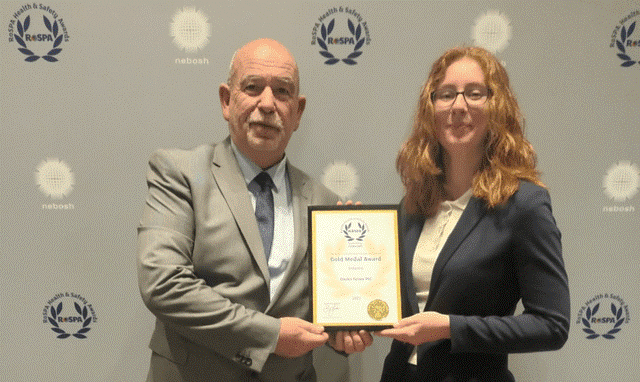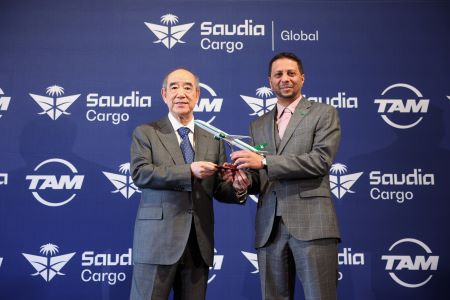An exclusive article for International Trade Magazine by Bindiya Vakil, CEO and co-founder of Resilinc
As the global supply chain continues to seek stability post pandemic, outdated ideas about how to practise effective supply chain risk management are unfortunately still widespread. In fact, the non-stop chaos of the pandemic era only reinforced past tendencies by organisations when it comes to managing their international supply chains. Caught in a cycle of one emergency after another, scrambling to cope with allocations, leaping into crisis mode when shortages or delays loom, and spending wildly to procure quickly from alternate sources and expedite freight. While this practice is highly commonplace (particularly over the past two and a half years) it’s also extremely counter-productive and should not be considered a long-term solution when it comes to managing supply chain risk.
As organisations look to build more robust supply chain risk management programmes in a post-pandemic world, it’s important to understand what to be aware of and what common mistakes to avoid. During the past twenty years of helping companies navigate supply chain disruptions to protect continuity of supply, here are the top five mistakes I often see organisations make when it comes to supply chain risk management (and how to remedy them):
1- Prioritising supply chain risk mitigations based on spend rather than revenues
When asked to name their most critical suppliers, many organisations will cite those that command the largest annual purchases. But in countless incidents, disruptions in supplies of low-cost items like paint, connectors, packaging, or labelling have caused the greatest impacts to company revenues. Often a low-spend, single-sourced material or component produced by a third- or fourth-tier supplier will disrupt entire supply chains for companies in multiple industries. Recently, the absence of a 12-cent part (one of 20 components in a product) halted an assembly line for two weeks; meanwhile the inability to get a $5 chip has wreaked havoc on the automotive and hi-tech industries. Yet, businesses are often blindsided by such disruptions because they have been paying attention to large direct suppliers and missing the sole-source dependencies deep in their supply chains.
Recently, shortages of commodities such as aluminium, silicon, and polyethylene, and the semiconductor chips relied on by the automotive industry have at times been so widespread that no amount of vigilance could have avoided the painful disruptions and cost increases that resulted. Yet these shortages arose from unprecedented circumstances. Going forward, paying the most attention to and directing risk mitigation actions toward suppliers whose loss or disruption would have the greatest impact on revenues will provide lasting value.
2- Driving your supply chains without a good map
For more than 30 years, global corporate supply chains have been optimised to reduce labour costs and improve efficiency. This has been good for consumer prices and company margins, but it has allowed hidden weaknesses to develop in supply chains. When the 2011 earthquake, tsunami, and nuclear disaster struck Fukushima, most multinational companies were shocked to be hit with disruptions that originated from lower-tier suppliers located in the affected area.
But even after Fukushima, only a minority of companies heeded the wake-up call to develop multi-tier supply chain mapping capabilities. When Covid-19 hit, companies such as GM, Cisco, IBM, and Amgen that had established comprehensive, multi-tier supplier mapping programmes quickly ascertained what parts and materials originated in Wuhan and Hubei and fast-tracked their responses. Those that did not had to act based on only the cloudiest of views beyond their tier-one suppliers.
For large OEMs that wish to reduce their supply dependency on China, a thorough supply chain map is essential. Without it, the OEM’s direct suppliers, contract manufacturers and product assemblers will likely remain dependent on Chinese-made materials, components, and intermediate goods. On the other side of the coin, the visibility that mapping provides could allow a company to decouple from China without switching suppliers. Resilinc’s data shows that about 30 percent of Chinese supplier firms have manufacturing sites outside of China. So, an OEM wanting to source from countries other than China could conceivably do so without the cost and time of qualifying a new supplier.
3- Viewing supply chain risk management as an operational burden rather than a strategic lever
Supply chain management is always dynamic and fast-changing. Shortages, demand spikes, supplier quality issues, budget constraints, delivery delays, and other operational challenges demand so much time and attention that leaders often have no time to step back and assess their supply chain risks and opportunities proactively—or to invest the time and money needed to gain multi-tier visibility through mapping.
Compensation incentives are usually tied to short-term goals around cost savings, inventory turns, and time to market. And in the event of disruptions, many companies make the mistake of rewarding employees who play the hero. and “save the day”—yet fail to account for raw material premiums or freight expedite costs. This sends the wrong message. One tool to begin remedying this situation is a post-event assessment with participation of finance teams to assess the true costs of the “heroic” measures. Then compensation structures should be re-oriented around resiliency metrics such as annual targets for mitigation actions for high-risk suppliers and critical supplies.
4- Not holding one leader accountable for risk management and resiliency
While most large OEMs have a chief procurement officer (and often more than one, with responsibilities spread across company divisions), many organisations have insufficient clarity about who is responsible for risk management and mitigation and what is expected of supply chain risk management teams.
Designating a single person to lead supply chain risk and resiliency is critically important. This position must be filled by someone with strategic vision and the ability to influence c-suite leaders as well as their cross-functional counterparts. They must be able to balance personal diplomacy with a willingness to rock the boat of organisational inertia when necessary.
The most important role of this supply chain risk management leader is to bring together a cross-functional core team from all relevant departments to establish clear expectations about the services and value expected from the supply chain risk management team and to collaborate effectively to deliver those. Best-in-class, mature supply chain risk management leaders provide bi-annual or annual CEO and board level reports.
5- Looking for short-cuts on the journey to a robust supply chain resiliency program
In Resilinc’s experience, developing a supply chain resiliency program that is aligned with a company’s core strategies and focused on increasing ROI rather than meeting operational objectives typically requires three to five years. For many corporate leaders, the requisite patience and discipline required to make this journey is lacking. That’s understandable—and it’s also a formula for losing out on the long-term ROI that a truly robust supply chain resiliency program can deliver.
A mature supply chain resiliency programme includes real time event monitoring and alerts; supply chain mapping down to part origin for single-sourced parts; a reasonable degree of sub-tier visibility on constrained materials or historically weak suppliers; and proactive risk mitigations engaged for critical high-impact, high-vulnerability suppliers, sites, and parts. It is guided by revenue impact assessments and not annual cost/spend; it is managed by cross-functional core teams that collaborate regularly to set goals and execute mitigations; and it generates risk insights that inform product design decisions.
However, even after a company has reached a high level of maturity there is still work to be done maintaining and refining the programme. Often, corporations with mature capabilities have lost their edge and experience consequent declines in their capabilities. Maintaining c-level support, as well as the robust participation of category managers and functional teams, requires continuing education by the supply chain risk team lead—and this can be particularly important with changes in c-level leadership.
To borrow a phrase, if you’re not using the pandemic to secure greater c-level support for a robust supply chain resiliency program, then you’re wasting a good crisis. Specifically, your company is missing opportunities to develop resilient supply chains that can enhance customer relations, enable the application of risk insights to new product design, build brand value, and generate quantifiable ROI.
To read more news and exclusive features see our latest issue here
Never miss a story… Follow us on:
![]() International Trade Magazine
International Trade Magazine
![]() @itm_magazine
@itm_magazine
![]() @intrademagazine
@intrademagazine
Media Contact
Anna Wood
Editor, International Trade Magazine
Tel: +44 (0) 1622 823 922
Email: editor@intrademagazine.com





